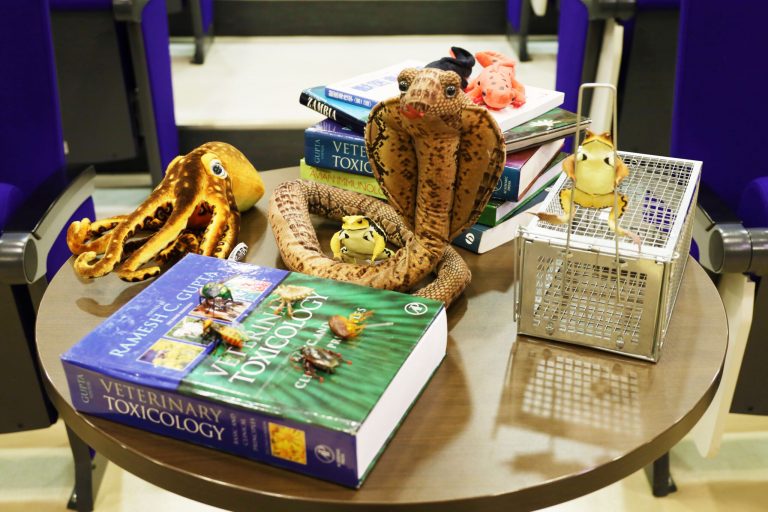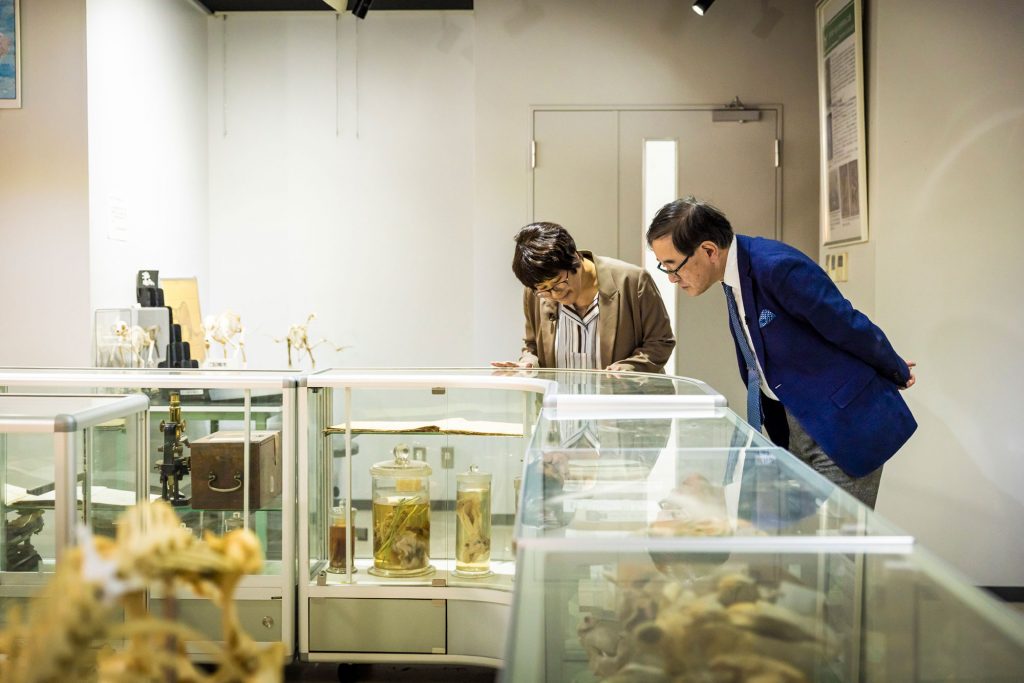The President’s Adventures in Knowledge-Land is a series in which Hokkaido University president Kiyohiro Houkin, a neurosurgeon, visits fascinating researchers at Hokkaido University. The third installment, titled “From toxicology to One Health approach,” features a discussion with Professor Mayumi Ishizuka of the Graduate School of Veterinary Medicine. Professor Ishizuka’s toxicology research on environmental pollution in Zambia led to the launching of the interdisciplinary “One Health” initiative at the University. They discussed her research history, the research environment at the University, as well as future prospects.
A curiosity driven by venomous animals
Houkin: First of all, I think that your research field—toxicology within veterinary medicine—is somewhat atypical. What made you choose this field?
Ishizuka: I have liked animals since I was a child, which is why pursuing veterinary medicine was only natural. I have always been particularly interested in venomous animals. I happened to enter the University a while after the Laboratory of Toxicology was established. That is why I decided to do research on venoms.
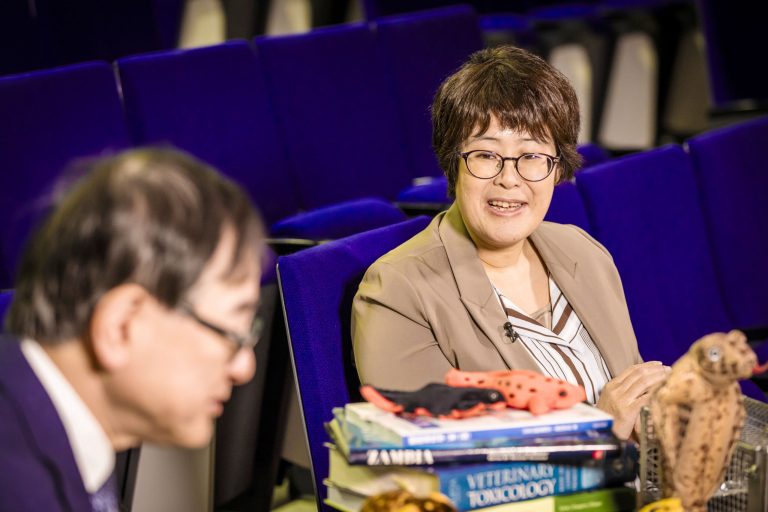
Houkin: I think having an interest in venomous animals itself is also uncommon.
Ishizuka: Is that so? When I first joined the lab, I wanted to do research on tetrodotoxin, aka the pufferfish toxin. Do you know about floral egg crabs?
Houkin: Floral—? No, I have never heard of it.
Ishizuka: Floral egg crabs are so important that they are even mentioned in the national exams. These creatures have the pufferfish toxin. One of my research motivations is a curiosity about how the floral egg crabs store this toxin. In fact, tetrodotoxin in puffer fish is not created by the puffer fish itself but by bacteria. As long as the toxin is not overtly toxic to the animal, tetrodotoxin can enter and accumulate in the animal’s body.
Houkin: So that was the beginning of your main research theme, I see. What is the focus of your current research?
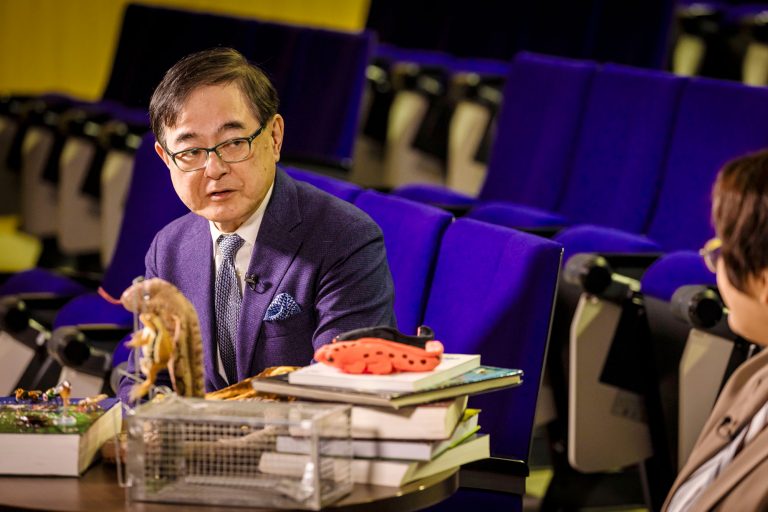
Ishizuka: Our laboratory has two research pillars. The first is the animals’ biological defense mechanisms to protect themselves against chemical substances. Since these mechanisms differ across species, we want to study these interspecies differences. For instance, it is said that cats are very vulnerable to human pharmaceuticals.
Houkin: Is that true?
Ishizuka: Yes. It is known that cat livers do not produce the detoxification enzymes properly, so we would like to find out the reason behind this vulnerability. At the School of Veterinary Medicine, we obviously don’t look only at mammals but also at birds, reptiles, amphibians, and fish. We are investigating interspecies differences in a broad sense.
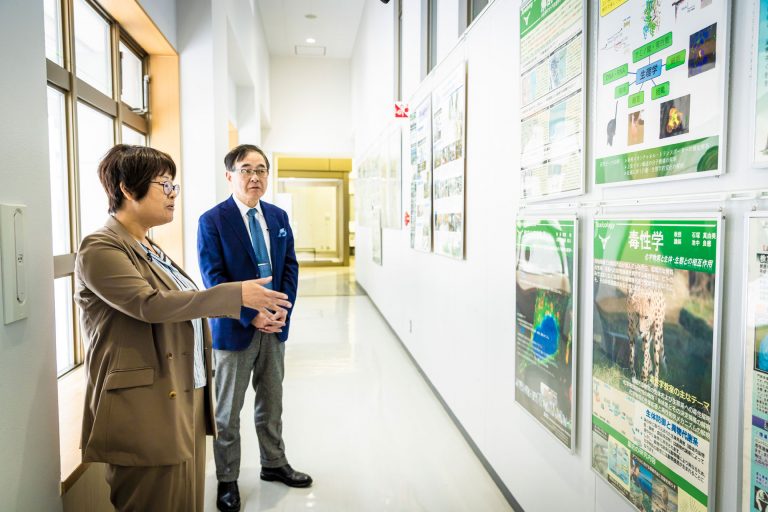
Houkin: What is the other pillar?
Ishizuka: The other is environmental pollution. For example, we are currently investigating the toxicity of pesticides and heavy metals on living organisms. People say that the environment in Japan is fairly unspoiled; nevertheless, there are cases of accidental animal poisoning. In developing countries, however, that is still their greatest concern. Problems faced by Japan in the past, such as pollution, are still ongoing in developing countries. Our laboratory is sending students who are interested in those issues overseas to conduct field research there.
Tackling the environmental pollution issue with an interdisciplinary team
Houkin: What led you to conduct research in Zambia?
Ishizuka: In the first place, Hokkaido University’s School of Veterinary Medicine already had a strong connection with the University of Zambia. Some students who had studied under our professors later became professors there. So, we launched a project dispatching our students to Zambia for around a month to learn from the professors there. I once had a discussion with the professors at the University of Zambia when I was asked, “Do you know that Zambia has an environmental pollution problem? Since there’s only a little data yet, what if you look into this matter as a toxicologist?”
Houkin: What is the worst kind of environmental pollution in Zambia?
Ishizuka: At the time, it was lead contamination. There were deposits of zinc and lead that were mined. At the start of our study, the mines near Lusaka had almost been either left idle or there was little activity. Yet, the waste from the mining was probably blown away by the wind and spread as dust and other particles.
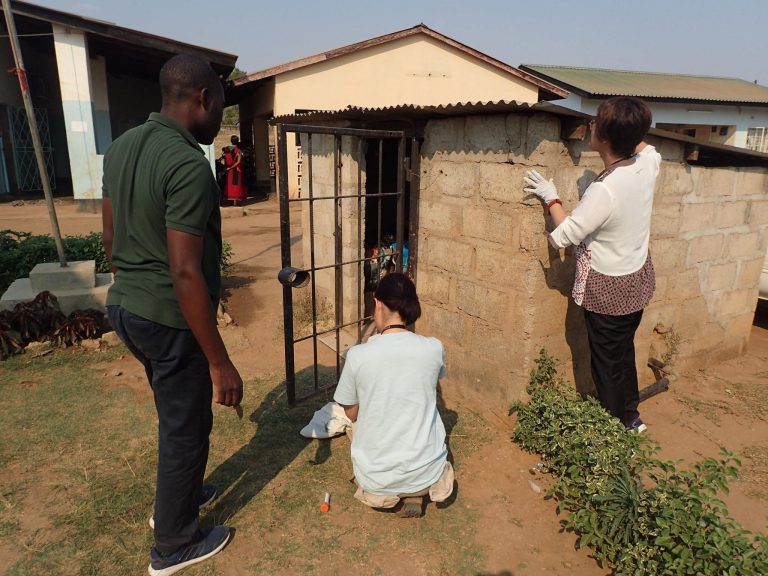
Houkin: Apart from toxicology, your work in Zambia is surely connected to solving problems related to Sustainable Development Goals (SDGs), environmental issues, and social problems.
Ishizuka: I think so. We toxicologists also analyzed lead concentrations in Zambian children’s blood. Based on the data we could measure an alarming concentration. However, some of my students mentioned that just informing the affected people would not solve the problem. When the students talked with the locals, the reaction of the locals was something like, “We understood about the pollution, but we want you to tell us what to do.” With this, I realized that animal toxicology alone is not enough to solve the problem.
Houkin: I see.
Ishizuka: I discussed this matter with a professor from the School of Engineering at that time and we planned to find the solution together. Still, we knew that Engineering was not enough, so we invited people from many other fields like Agriculture, Science, Information, and Public Health. From Humanities, we had a professor from Economics because, after all, environmental pollution is not separate from economic activities. For those reasons, we formed an interdisciplinary team.
Houkin: That is truly the strength of a comprehensive university. Veterinary Medicine alone cannot achieve it, neither can Economics nor Engineering alone. In that sense, that research is very typical of Hokkaido University.
Ishizuka: That is true. I really feel that one of Hokkaido University’s strengths is its nature as a comprehensive university. Another strength is the fact that the University’s professors
seem to have a keen sense for field science. Once I approached some professors, the interdisciplinary barriers came down immediately. Everyone was very open and cooperative for which I am very grateful.
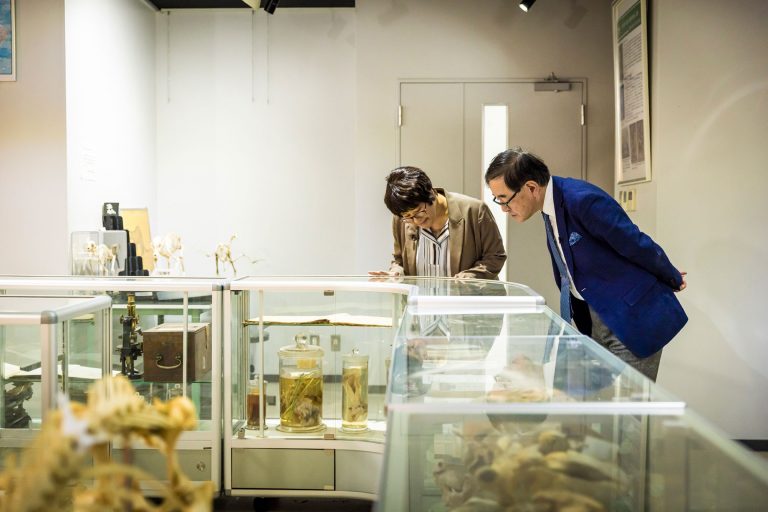
Houkin: Another thing that we have previously discussed is “zoobiquity” which refers to the idea that so-called human medicine and veterinary medicine should overlap further for mutual benefit. In relation to which, could you please talk a little more about the so-called “One Health” concept?
Ishizuka: “One Health” was a term coined by veterinarians. When we think about animal health, it is not possible to limit that thinking only to animals. We also need to consider the health of humans. Additionally, we need to consider the ecosystem and environment to achieve animal health. The general concept One Health is “to consider the health of humans, animals, and the environment as a single health issue.”
Interdisciplinary connection and Hokkaido University’s strength
Houkin: The One Health Research Center has just been established at Hokkaido University. What are your thoughts about the future direction of the Center?
Ishizuka: I would like to have more and wider promotions on the Center’s activities. In fact, when we just started our research in Zambia, we reached out to professors outside our own school and lab who gave their overwhelmingly positive support. Also, students have lower barriers than professors do. I believe the development of the One Health network can start with the students continuing to connect with each other in many areas.
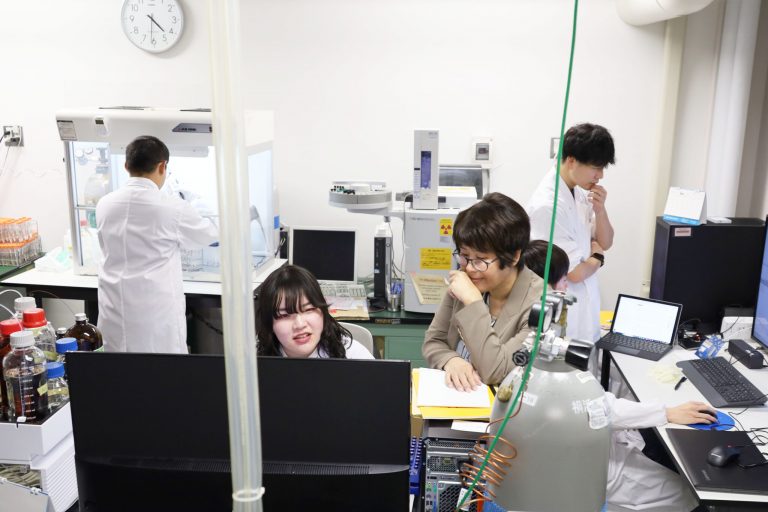
Ishizuka: Asking “What should we do?” in any collaboration is certainly important, but the interdisciplinary One Health approach is very effective in answering “What should we do to achieve our goal?”
Towards the novel Veterinary Forensic Medicine
Houkin: You seem to enjoy your research and passing time with your students and the people in Zambia. Everything seems to give you vitality. Can you share about the things that motivate you?
Ishizuka: On research, as I have previously mentioned, we have two pillars. First is the study of biological defense systems across species. The second is resolving the issues in the developing countries that are probably not faced by contemporary Japan, such as the exposure to various kinds of chemical substances. Actually, there is another thing that I just started working on: Veterinary Forensic Medicine, the investigation of animal deaths. Despite my age and my status as a professor, I am once again learning from scratch.
Houkin: So, it is basically the animal version of forensic medicine.
Ishizuka: The discipline is not yet well advanced in Japan, but we are still trying our best
to create the core curriculum and the textbooks. Veterinary Forensic Medicine is a field where not only toxicologists but also clinicians, pathologists, and other specialists come together to make decisions. I have been receiving a lot of help and tutoring from the forensic medicine professors at Hokkaido University.
Houkin: Will it lead to a new formulation of animal rights?
Ishizuka: Right. It is closely related to both animal welfare and One Health. Issues surrounding animal abuse and animal welfare are connected after all.
Houkin: In today’s society, I believe that the concept of One Health brings us the future. I hope that Hokkaido University will be the start of a One Health system that includes human medicine, veterinary medicine, and the global environment, so that we can incorporate this into our academic system and create a fusion science.
Ishizuka: Certainly! I would love to take part.
Houkin: Expanding from Veterinary Medicine, One Health and animal welfare will require integrative research. In that sense, I thought that this research shows very well what is unique to Hokkaido University, especially as a comprehensive research university. I believe that this is an area with great potential that must be developed in the future.
Ishizuka: Thank you so much for such encouraging and motivating words. With the establishment of the One Health Research Center at Hokkaido University, we will do our best in the One Health activities to improve the health of people, animals, and environmental ecology.
